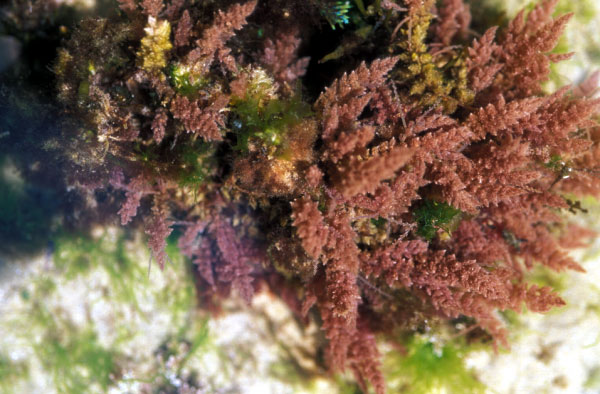Falkenbergia rufolanosa Harvey
Pale purplish-red, quickly degenerating when removed from the water and becoming distinctly orange; fronds bushy, with a cylindrical axis to1 mm wide and 200 mm long. Both phases readily reproduce vegetatively. Photographs by M.D. Guiry

Ash behavior during hydrothermal treatment for solid fuel applications. Part 1: Overview of different feedstock
Differences in ash behavior during hydrothermal treatment were identified based on multivariate data analysis of literature information on 29 different feedstock. In addition, the solubility of individual ele- ments was evaluated based on a smaller data set. As a result two different groups were distinguished based on char ash content and ash yield. Virgin terrestrial and aquatic biomass, such as different types of wood and algae, in addition to herbaceous and agricultural biomass, bark, brewer’s spent grain, com- post and faecal waste showed lower char ash content than municipal solid wastes, anaerobic digestion residues and municipal and industrial sludge. Lower char ash content also correlated with lower ash yield indicating differences in chemical composition and ash solubility. Further evaluation of available data showed that ash in industrial sludge mainly contained anthropogenic Al, Fe and P or Ca and Si with low solubility during hydrothermal treatment. Char from corn stover, miscanthus, switch grass, rice hulls, olive, artichoke and orange wastes and empty fruit bunch had generally higher contents of K, Mg, S and Si than industrial sludge although differences existed within the group. In the future information on ash behavior should be used for enhancing the fuel properties of char based on feedstock type and hydrother- mal treatment conditions.


